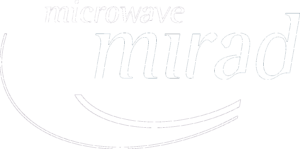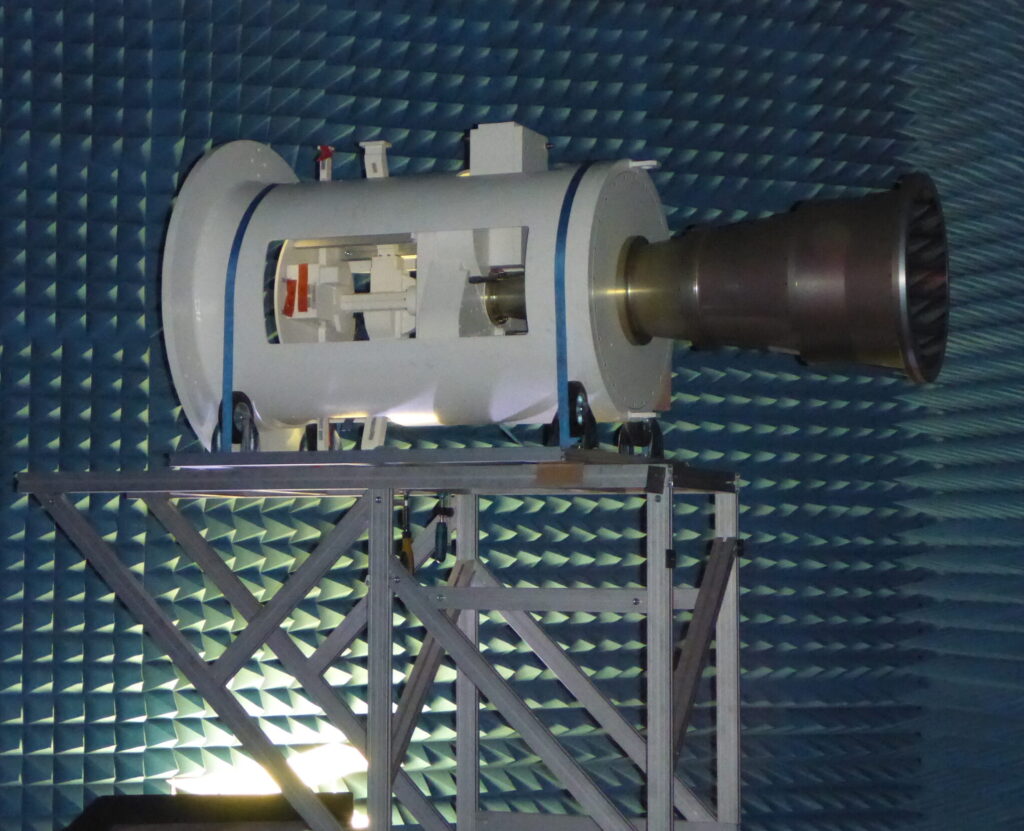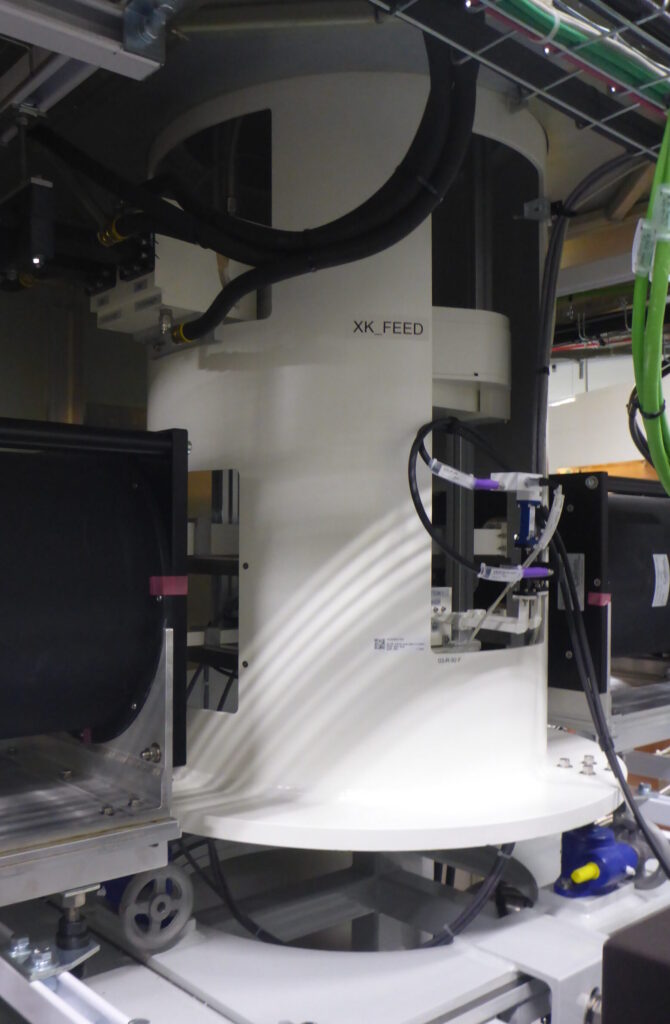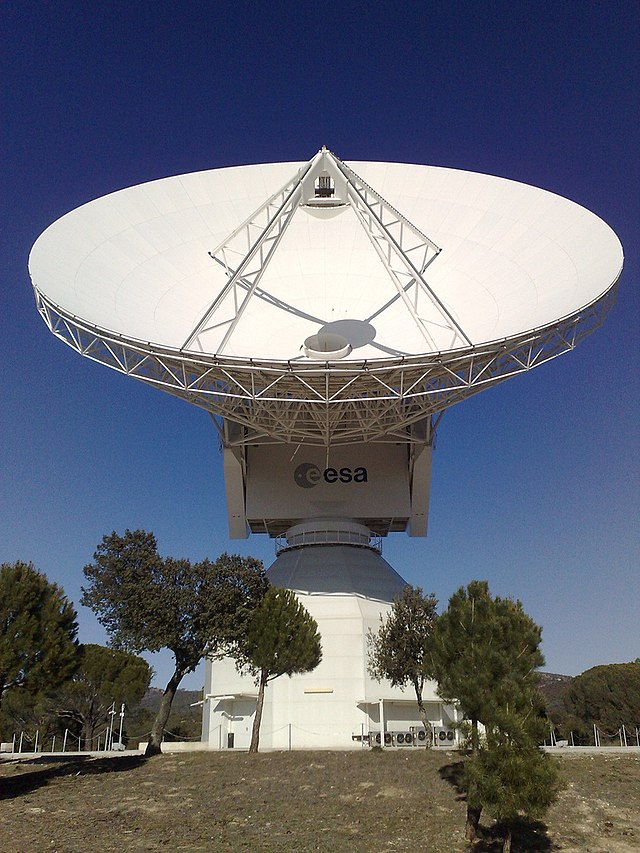ESA operates a network of deep space beam-waveguide (BWG) antennas (DSA) with three sites around the globe. The DSA2 & DSA3 have transmit and receive capabilities in X- and Ka-band feed systems delivered by MIRAD for mission operation. International space agencies planned higher data rate, space exploration missions requiring high bandwidths that are not restriced to near-Earth or deep space missions at that time. For this purpose, the 25.50 – 27.00 GHz frequency range has been allocated for the downlink. Following the successful inauguration of ESA’s Deep Space Antenna 2 (DSA2) in Cebreros, Spain in 2004, and the decision to build a third version of this 35-m BWG antenna in Malarüe, Argentina, ESA decided to integrate another transmit and receive capability into its antennas.
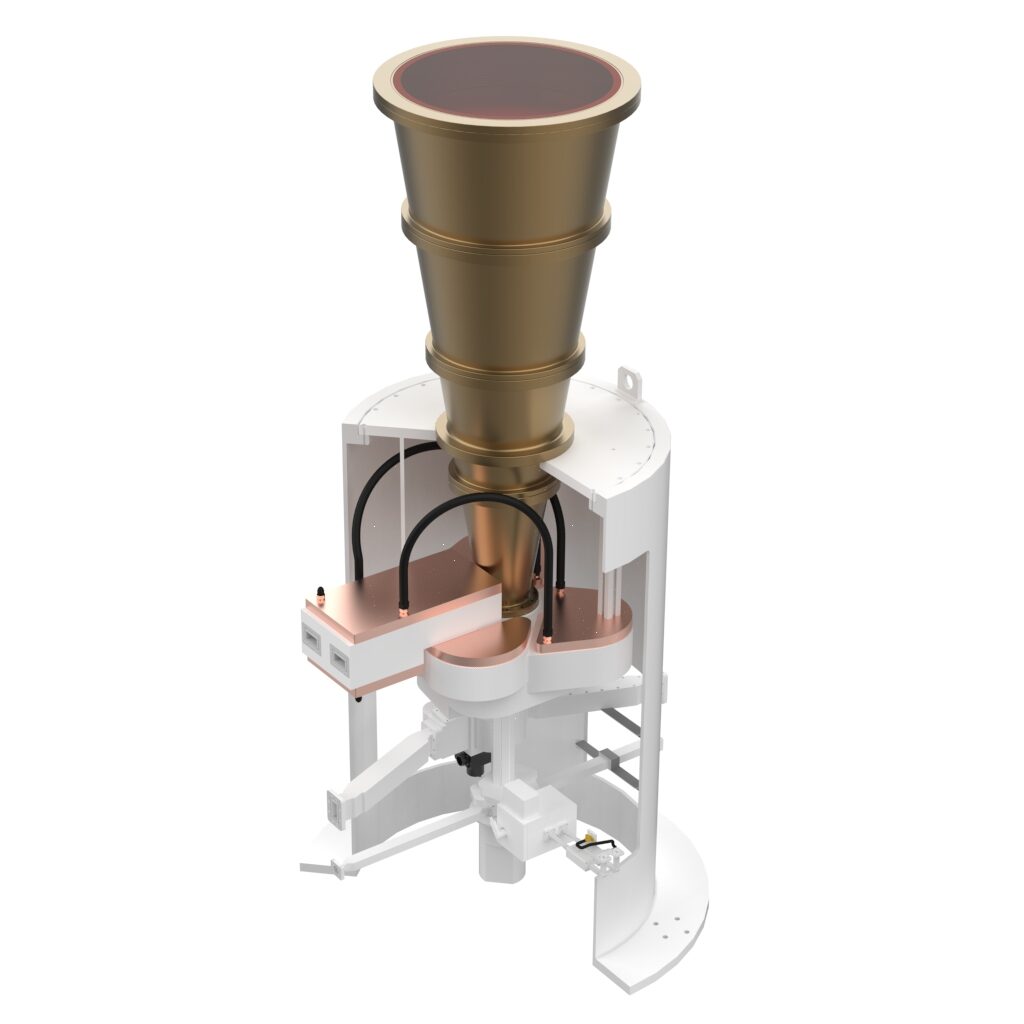
In this context, MIRAD was again contracted in 2011 to develop a feed system for this generation of antennas. A dual-band solution that allows transmitting and receiving in the X-band and simultaneously receiving broadband signals in the newly assigned K-band. After a 2-year project phase, all tests and measurements were successfully completed. In 2015, two of these feed systems with redundancy switching and TE21 mode monopulse tracking were ordered for installation in the antennas and delivered in 2017 and integrated first in Cebreros and then in Malargüe in 2019.
X/K-Feed during measurements in MIRADs anechoic chamber (left), installed feed system in DSA2 (center) and deep space antenna in Cebreros* where tone feed is installed (right)
Key technical challenges:
- Combination of widley spread frequency bands
- Extreme low insertion loss requirement
- X-band power handling of 25kW CW
- Redundancy switching for X-Rx, K-Rx and K-tracking
- Precision and minimum tolerance manufacturing
- X-band 25kW CW signal transmission
(Tx: 7.145 – 7.235 GHz) - X-band signal reception (Rx: 8.400 – 8.500 GHz)
- K-band signal reception and tracking
(Rx: 25.50 – 27.00 GHz) - Dual circular polarisation of all bands
- Low insertion losses <0.2 dB
- Low group delay variation
*Credit: ESA’s 35m deep space antenna at Cebreros, Spain, CC-BY-3.0, https://de.wikipedia.org/wiki/ESTRACK
